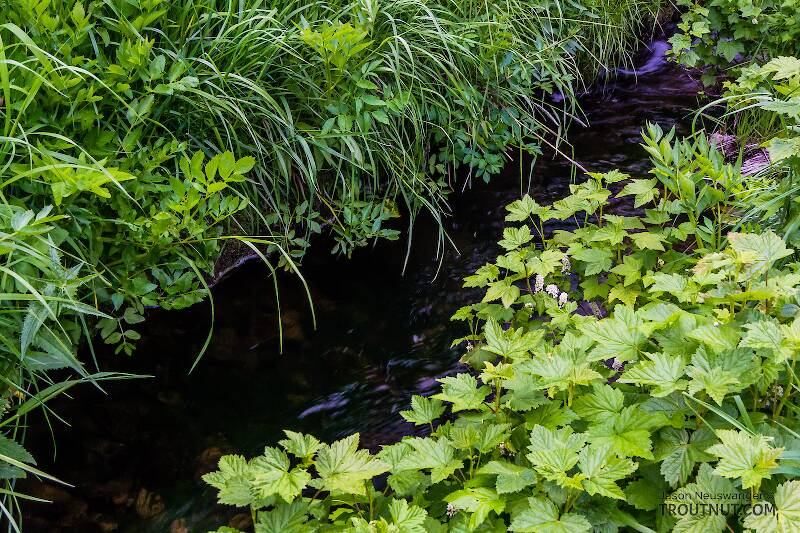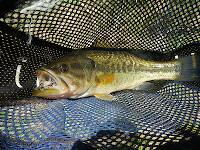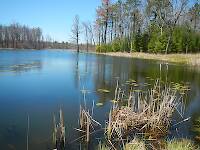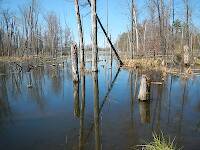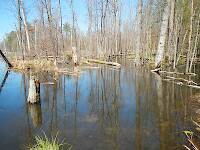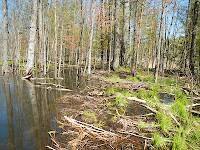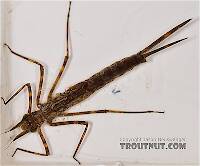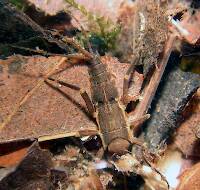
Hex Mayflies
Hexagenia limbata
The famous nocturnal Hex hatch of the Midwest (and a few other lucky locations) stirs to the surface mythically large brown trout that only touch streamers for the rest of the year.
Featured on the forum

Nymphs of this species were fairly common in late-winter kick net samples from the upper Yakima River. Although I could not find a key to species of Zapada nymphs, a revision of the Nemouridae family by Baumann (1975) includes the following helpful sentence: "2 cervical gills on each side of midline, 1 arising inside and 1 outside of lateral cervical sclerites, usually single and elongate, sometimes constricted but with 3 or 4 branches arising beyond gill base in Zapada cinctipes." This specimen clearly has the branches and is within the range of that species.

Troutnut is a project started in 2003 by salmonid ecologist Jason "Troutnut" Neuswanger to help anglers and
fly tyers unabashedly embrace the entomological side of the sport. Learn more about Troutnut or
support the project for an enhanced experience here.
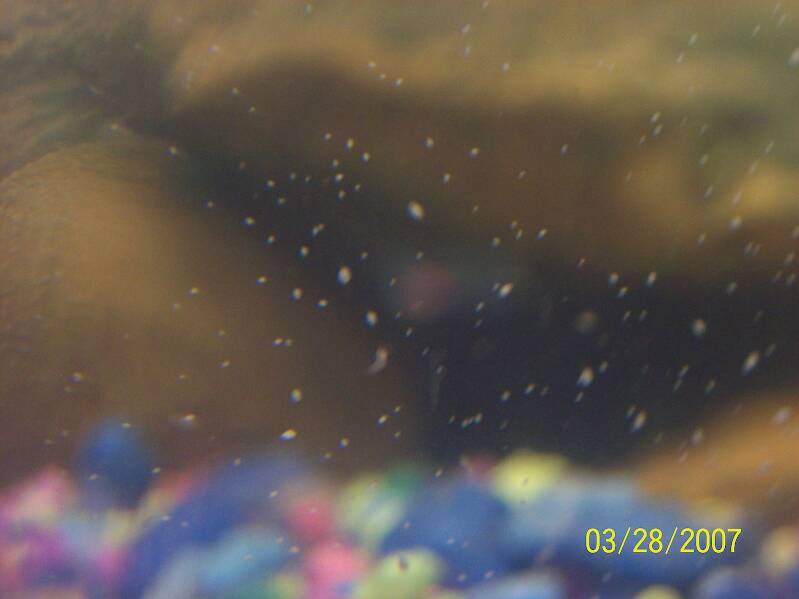

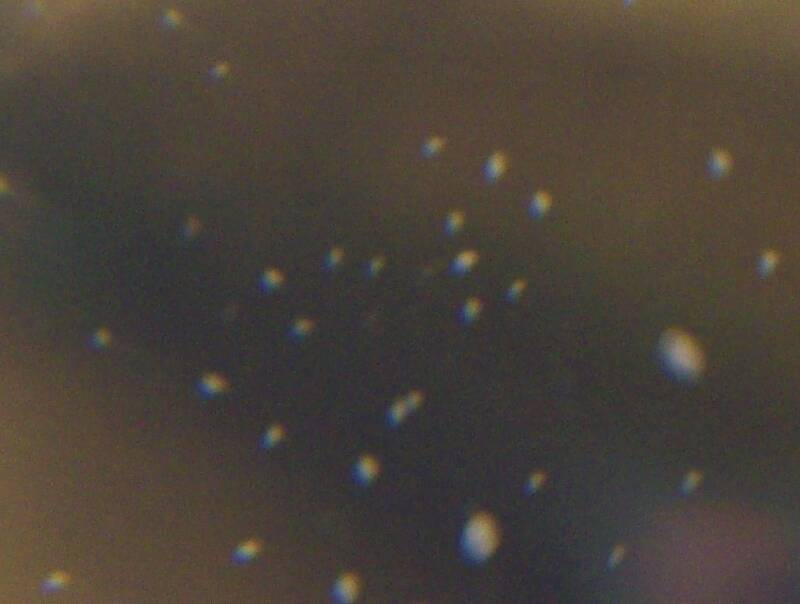
Dawnrenee
Posts: 1
Posts: 1
Dawnrenee on Aug 19, 2008August 19th, 2008, 10:16 am EDT
I don'k know if anyone can help me or not, but it's worth a shot. I had let my kids put some little tadpoles in my aquarium for the fish to eat, but I know that was a big mistake. Now the bottom of my aquarium is covered with tiny mites. They haven't tried messing with my fish YET. I've tried cleaning the tank, but they won't go away. I don' know what they are to even try to find out how to get rid of them permantly without killing my fish. They are smaller than spider mites that you would find on plants. They are clear with what looks like about 6 black dots on their backs and the underneath has nothing. The body seems to be a thin shell-type. Not hard to squash, but seems hard for it's tiny size. I took some pictures using my small camera and a magnifying glass. I don't have anything fancy to take better pictures, but I hope the description will help out. The mites are on regular size small marble and regular size small aquarium gravel. And I can answer any questions to the best of my ability. Can someone please help? I can also be reached at dawndawnrenee@aol.com. Thanks, Dawn S.
p.s. Here are three pics. I have one more, but there was too many kb to be acceped. Thanks for any and all help.
p.s. Here are three pics. I have one more, but there was too many kb to be acceped. Thanks for any and all help.
Inconnu on Aug 28, 2008August 28th, 2008, 7:16 am EDT
It is hard to make them out clearly but the shape of the clearer critters say they are daphnia. If they are and I believe I am right, they are raised as food for aquarium fish. Hope this helps....Kerry
existo bonus ut invicem
Troutnut on Sep 2, 2008September 2nd, 2008, 6:42 am EDT
Yeah, a couple critters in the second picture especially look like Daphnia. If so, they're actually a good and harmless food source for anything else in your tank. Don't worry about it.
Jason Neuswanger, Ph.D.
Troutnut and salmonid ecologist
Troutnut and salmonid ecologist
Quick Reply
Related Discussions
Topic
Replies
Last Reply
Re: Not fly fishing, but some neat winter dogsledding pictures...
In the Photography Board by Troutnut
In the Photography Board by Troutnut
3
Feb 2, 2010
by Oldredbarn
by Oldredbarn

